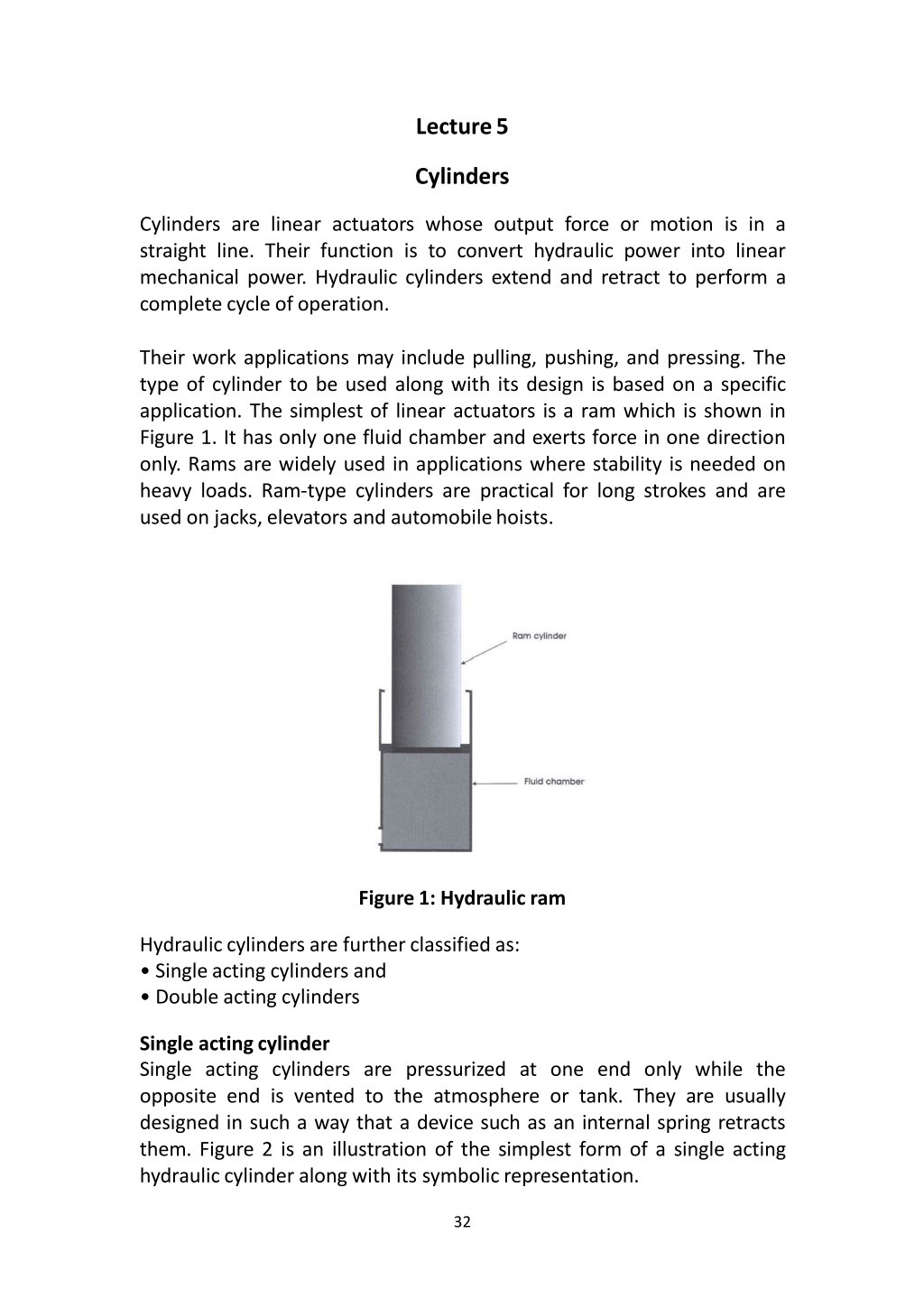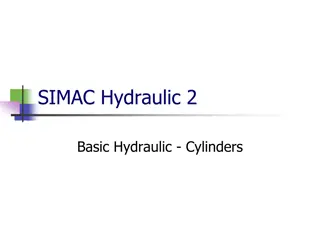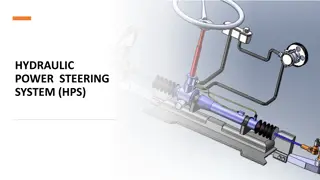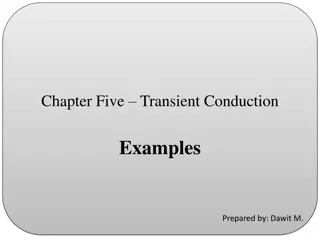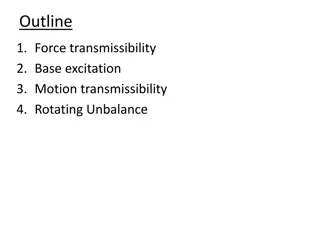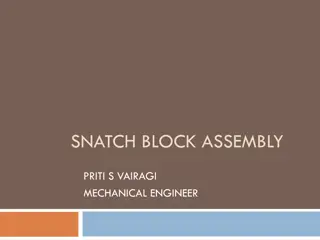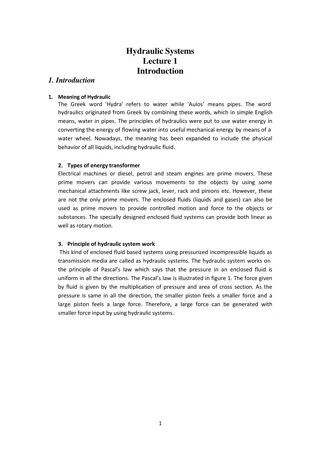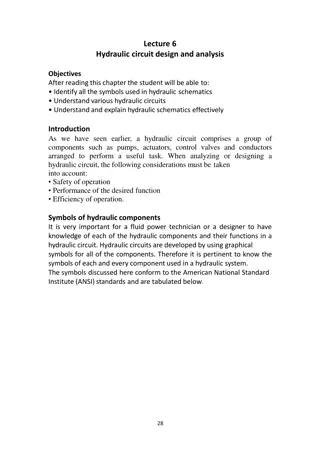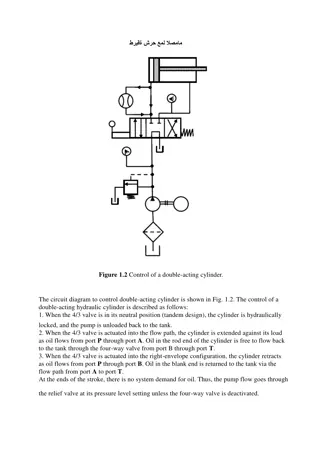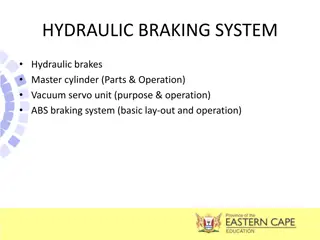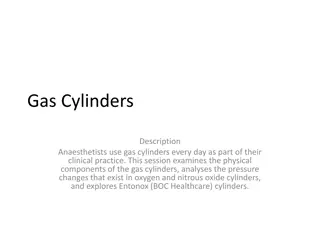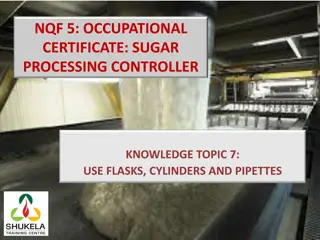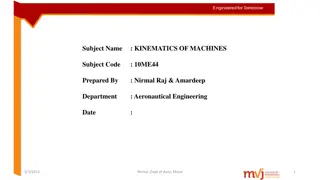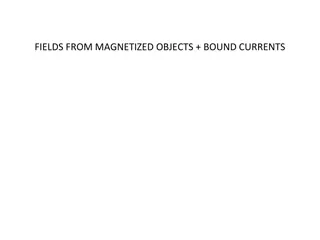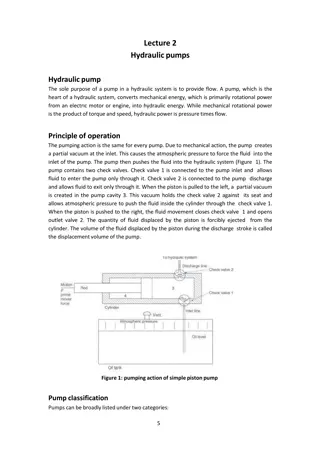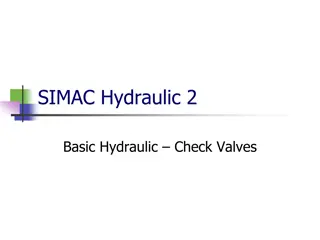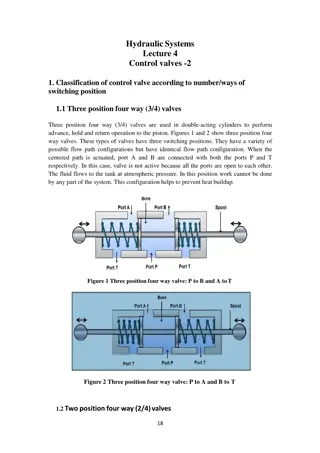Understanding Hydraulic Cylinders in Mechanical Systems
Hydraulic cylinders are essential linear actuators converting hydraulic power into mechanical power. They come in single-acting and double-acting types, each with specific functions and applications. The design and choice of cylinder depend on the intended use, such as pulling, pushing, or pressing. This technology is widely employed in various industries, from automotive to construction, for its efficiency and reliability in generating straight-line motion.
Download Presentation

Please find below an Image/Link to download the presentation.
The content on the website is provided AS IS for your information and personal use only. It may not be sold, licensed, or shared on other websites without obtaining consent from the author. Download presentation by click this link. If you encounter any issues during the download, it is possible that the publisher has removed the file from their server.
E N D
Presentation Transcript
Lecture5 Cylinders Cylinders are linear actuators whose output force or motion is in a straight line. Their function is to convert hydraulic power into linear mechanical power. Hydraulic cylinders extend and retract to perform a completecycle ofoperation. Their work applications may include pulling, pushing, and pressing. The type of cylinder to be used along with its design is based on a specific application. The simplest of linear actuators is a ram which is shown in Figure 1. It has only one fluid chamber and exerts force in one direction only. Rams are widely used in applications where stability is needed on heavy loads. Ram-type cylinders are practical for long strokes and are used on jacks,elevators and automobilehoists. Figure 1: Hydraulic ram Hydraulic cylinders are further classified as: Single acting cylinders and Double acting cylinders Single actingcylinder Single acting cylinders are pressurized at one end only while the opposite end is vented to the atmosphere or tank. They are usually designed in such a way that a device such as an internal spring retracts them. Figure 2 is an illustration of the simplest form of a single acting hydrauliccylinder along with its symbolicrepresentation. 32
A single acting hydraulic cylinder consists of a piston inside a cylindrical housing called a barrel. Attached to one end of the piston is a rod, which extends outside one end of the cylinder (rod end). At the other end (blank end) is a port for the entrance and exit ofoil. Blindend Piston Drain Figure 2: Single acting hydrauliccylinder Doubleactingcylinder Double acting cylinders are the most commonly used cylinders in hydraulic applications. Here pressure can be applied to either port giving power in both directions. Figure 3 shows the typical construction of a double acting cylinder.The cylinderconsistsof five basic parts: two end 32
caps (a base cap and a bearing cap) with port connections, a cylinder barrel, a piston and the rod itself. This basic construction provides for simple manufacture as the end caps and pistons remain the same for different lengths of the same diameter cylinder. The end caps can be secured to the barrel by welding, through tie rods or by threaded connections. 32
Figure 3: Construction of a double actingcylinder Example:A hydraulic cylinder is used to compress a car body down to a bale size in 10 s. The operation requires a 10 ft stroke (S) and a force (Pbad) of 8000 lb. If a 1000 psi pressure (P) pump is selected,find (a) The required piston area (b) The necessary pump flowrate (c) The hydraulic horsepower delivered by the cylinder Solution: Here Floadis the force required to crush the car for which the pump used can deliver a pressure of 1000 psi. So, to get the area of the piston required to take thisload, (a)Force = PxA so A= Fload /P= 8000/1000= 8sq.in. (b) The volumetric displacement of the cylinder equals the fluid volume swept by the cylinder during its stroke length (5) while the required pump flow rate equals the volumetric displacement divided by the time required for the stroke.So, G(ftVs) = (AxS)/t= ((8/144)X10)/10 = 0.056 ft3/s 1 ft3/s = 448gpm So 32
= 448x0.056 = 25.1gpm In order to calculate the power delivered we will use the equation Hp= QH= xQx(P/ ) Hp=[P(psi)xQ(gpm)]/1714 This has been derived by using the conversion factors, keeping in view the basic Power-energy equation which is Power =Energy/Time So Hp = (1000x25.1)/1714 = 14.6hp This is the theoretical horsepower delivered by the cylinder assuming its efficiency to be 100%. Then, to calculate the actual hp, this should be multiplied by the efficiencyspecifiedby the manufacturer. 32
